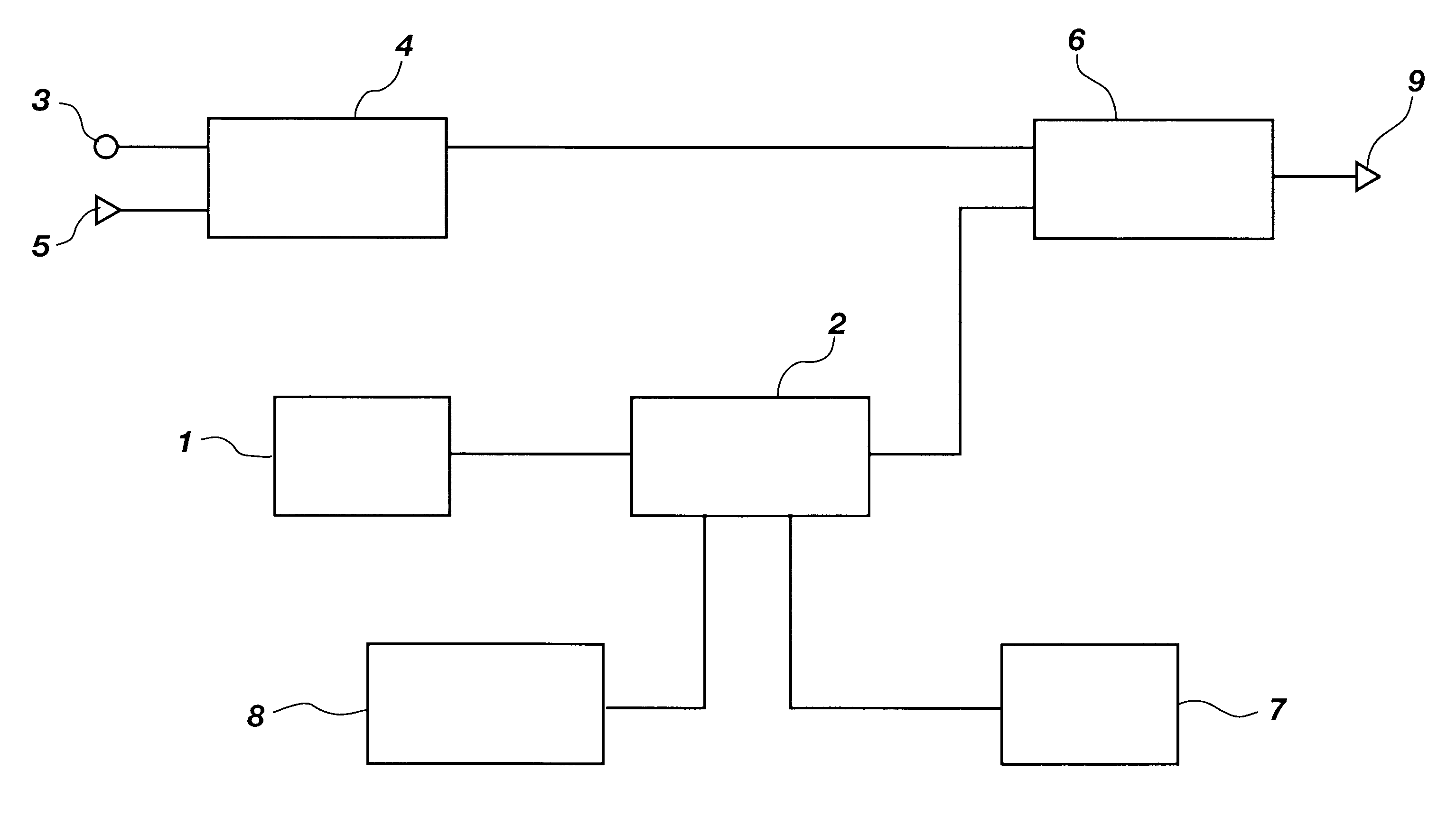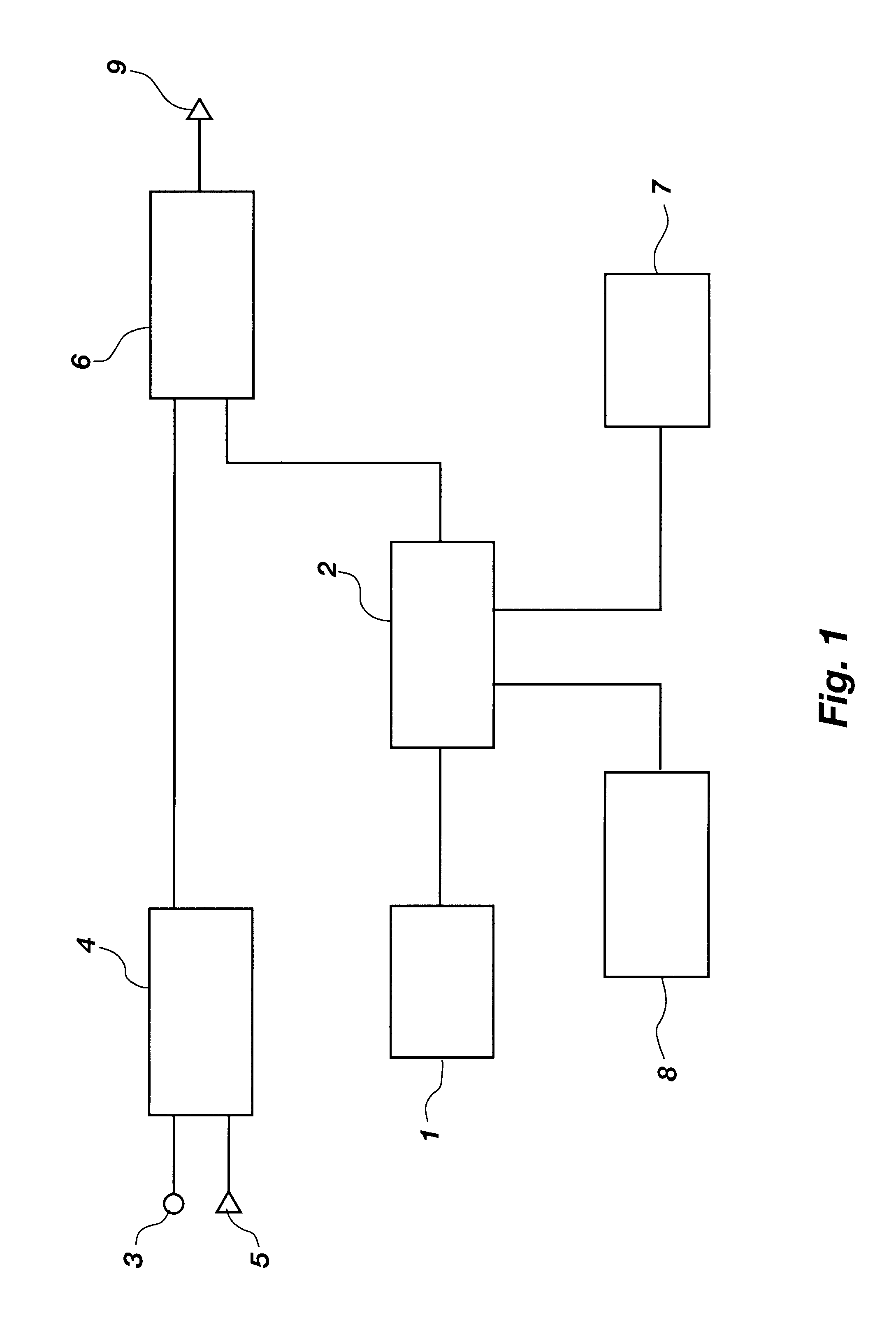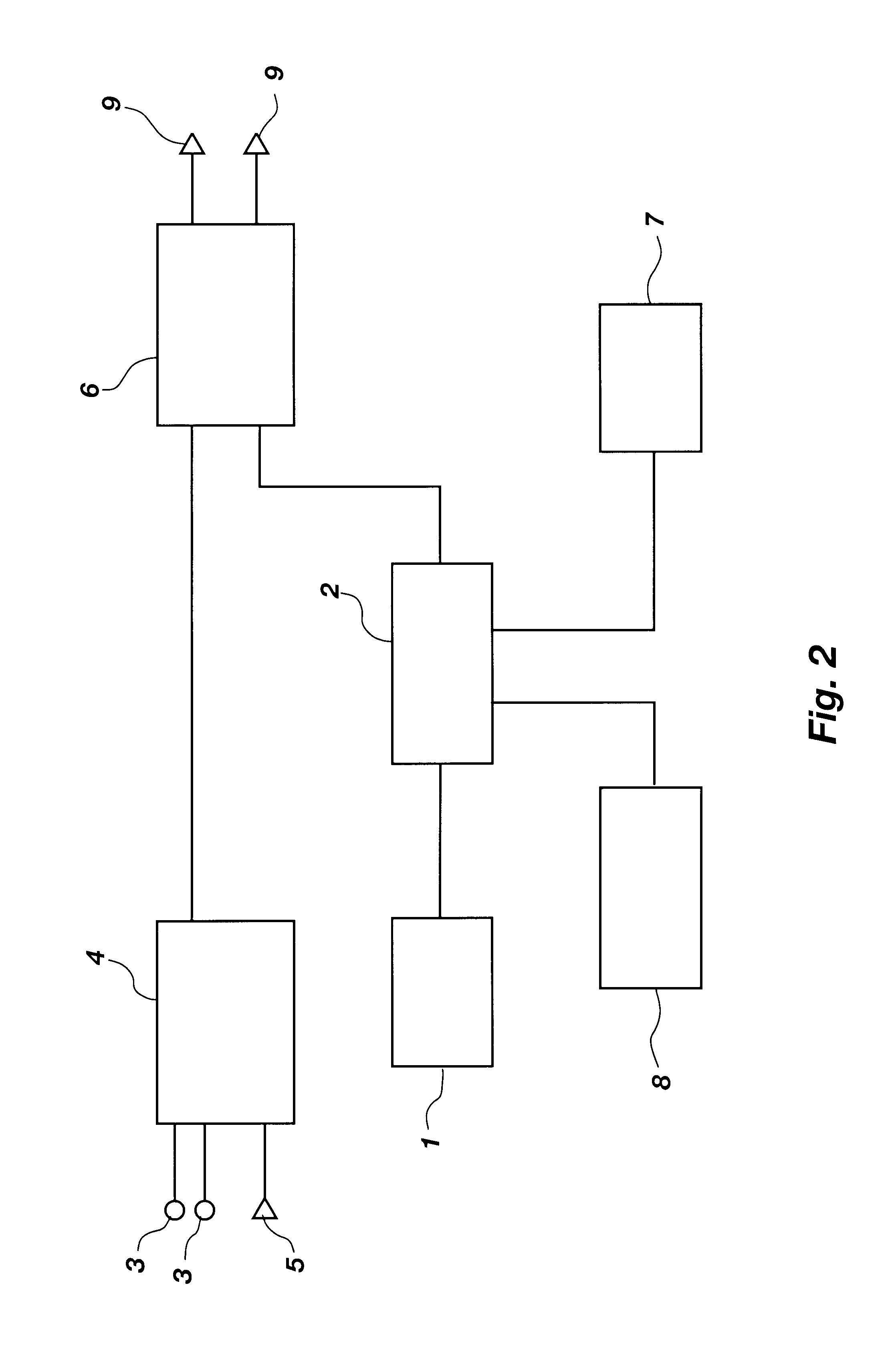Neural networked irrigation controller
a networked, irrigation controller technology, applied in adaptive control, applications, instruments, etc., can solve problems such as inability to communicate with other networks of such controllers, difficulty in eliminating, and inability to elimina
- Summary
- Abstract
- Description
- Claims
- Application Information
AI Technical Summary
Problems solved by technology
Method used
Image
Examples
Embodiment Construction
Several variations exist for the Neural Networked Irrigation Controller.
The embodiment of the single-zone irrigation controller possessing the most components and, consequently, the most functional options is portrayed in FIG. 1. FIG. 2 illustrates a similar embodiment of the multi-zone irrigation controller. The subsequent Figures display embodiments of these controllers in which some components and, thus, some functional options have been eliminated.
In FIG. 1, the keypad (1) is connected to the memory (2) and is operated by the user--or the manufacturer--to enter into the memory (2) the optimum efficiency range or the initial water threshold value, the terminal water threshold value, the initial zonal threshold values, and the terminal zonal threshold values.
The controller also has at least one zonal input terminal (3) to which may be connected a sensor appropriate for the type of zonal condition--such as moisture in the soil, temperature, evaporation, or dryness (surface moisture...
PUM
 Login to View More
Login to View More Abstract
Description
Claims
Application Information
 Login to View More
Login to View More - R&D
- Intellectual Property
- Life Sciences
- Materials
- Tech Scout
- Unparalleled Data Quality
- Higher Quality Content
- 60% Fewer Hallucinations
Browse by: Latest US Patents, China's latest patents, Technical Efficacy Thesaurus, Application Domain, Technology Topic, Popular Technical Reports.
© 2025 PatSnap. All rights reserved.Legal|Privacy policy|Modern Slavery Act Transparency Statement|Sitemap|About US| Contact US: help@patsnap.com



